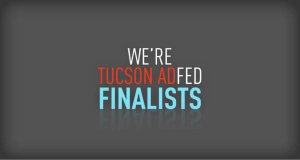Protect. Plan. Recover.
March 24, 2020
Updated 4/28/20
The evolving role of Destination Marketing Organizations into Destination Management Organizations has never been more evident than in recent weeks. We’ve developed the following framework to provide you and your partners with a helpful guide to thinking about not just short-term actions, but preparing and planning for the recovery of your marketing efforts for your destination.
Protect.
While our hotel partners are experiencing a downturn like never before—one that some may not recover from—we know your destinations provide much more than room nights. Each of you hosts your own unique offering of coffee shops, breweries, museums, events, and so much more. While we cannot promote immediate travel, we can promote those assets and the stories and people behind them through social media and local earned media. More than ever, you will need to activate your local residents for the duration of this COVID-19 crisis to help fill the massive gap left by the mitigation measures currently being put in place.
As destinations begin to open up the gates to responsible marketing, the current message should be “Don’t travel now, but we are looking forward to having you back when the time is right and we want you to be dreaming about us, too.” This sentiment is reflected back in comments on social media as past visitors are expressing nostalgia and the desire to visit again soon.
Now is the time to adjust SEM plans for those in the planning phase and shift keywords and ad groups to outdoor spaces or promotions for curbside pickup and other ways to support local economies. Beyond organic posts on social feeds, numerous cities across the country are running display, video, and paid social campaigns for inspiration.
As you look forward, look at the collective impact models that exist to bring together diverse organizations and groups with a common agenda. Collective impact models bring people and organizations together in a structured way to achieve social change with a common goal. We have the opportunity as an industry to advocate for our communities and lead toward this future.
Some immediate measures you can take to support your community broadly include:
- Continue being the conduit between partners to share information and best practices. This includes sharing information between partners about resources available to both the people affected through layoffs and the companies themselves. Helping to ensure the people have access to these resources will soften the effect of this crisis on them and improve the likelihood that those individuals will be able to rejoin the industry and bring back their historical knowledge, training, and skills.
- Tell the stories of your partners on social media, consolidate a list of companies offering take-out and delivery services, and create unique, newsworthy experiences with those partners to be picked up by local media. Look for opportunities to bring these efforts to visual-based media like YouTube or 360 videos.
- Reinforce the messages from your local health department regarding the current situation and the best measures to protect individuals, along with links to official releases.
- Review your current content and itineraries and determine what to share with locals to encourage activities they can do while practicing social distancing. Not all of these activities will be doable during specific times like a shelter-in-place directive, but locals will be able to return to those activities at some point ahead of visitors. These can also help drive pride-in-place among your residents and help reinforce your brand.
- Listing management is always a challenge to keep the most relevant information updated, and it will become more challenging during this period as businesses are forced to close. Create a workflow to review what businesses are temporarily or permanently shutting down, so this does not become a significant task that shadows your plans when you start to return to the new normal.
- Work with your local chambers and economic development offices to share resources and coordinate joint messaging.
- Adjust your homepage content to focus less on current events and more on general destination information.
- Share educational content (potentially in partnership with teachers) about your destination for children at home across the country. This could include math problems around distance, volume problems around size, destination history, and more.
Everyone is seeking assistance from all levels, and you likely have reduced resources either through furloughs or new budget constraints. You already know your most critical assets through your existing destination development plans, visitor profile studies, and research data; use these studies or get the historical pattern of life tracking data, so you know where to prioritize your resources. While you may have significant leisure data, do not forget to review the pattern of life data of visitors to your convention centers to see what enriches the experience for event attendees. Work with your board to move some of your media efforts to support these key partners.
Whether you’re a government entity or a non-profit organization, you are going to have to protect and defend your budgets. Right now, you need to protect your organization and resources and, like your partners, look for recovery funds and loans to protect your team and efforts. Seek board approval to take on debt that might include potential payroll protection loans and economic stimulus benefits. Like your partners, you have also been adversely affected, and your non-profit should be seeking SBA assistance and working with your political leaders to ensure 501(c)6 organizations can qualify. Programs like these will be helpful to ensure that you have your full team to help you prepare and respond. U.S. Travel has established a guide to review options and your potential eligibility.
Lastly, keep in mind that there are still bookings for meetings going on for the future. These will easily be 6-18 months in the future, making short-term cuts for payroll could have long-term consequences. The relief programs should help to minimize the short-term pain and help mitigate the longer-term impact.
Plan.
The world has just hit the pause button and we can’t expect that travel and tourism will suddenly go back to normal once the doors are open. Still, we all need to be working towards growing your destination and returning your hotel partners to a sustainable occupancy level. First, identify where you are on your curve. We are seeing a 15-30 day bell curve from the time community spread reaches a destination—this is within a metro region or state, not the data we will see from the country. As we review industry news, trends, and considerable research provided by Tourism Economics, we see booking interest start to return at 30-45 days from community spread. The result is that those areas which are most likely to be hit first will also be the first to recover, but will continue to suffer the longer-term PR concerns about safety.
As the virus settles into pockets, some destinations will be better suited to handle visitors sooner rather than others. All of us know from our experience working within the traveler’s journey that leisure travelers will dream about a type of trip well before they start considering your destination. It is imperative to meet them where they are in the journey. Right now, people are home either not working or working remotely; they are looking for distractions and are online in droves. Keep those who are showing interest and intent to travel inside of your funnel by maintaining some limited media through the duration of the crisis since leisure travelers generally take 40+ days to decide to book. Bear in mind, 76% of travelers stated they planned to travel in the next six months, as recently surveyed by Longwoods.
When travel does pick up again, there will still be significant segments of the population that are reluctant to travel—whether due to financial instability or lingering health and wellness concerns. For those who do travel, find ways to highlight the affordability of your destination. The first people to travel will likely be drive-markets looking for budget-conscious short stays, day trips, and potentially weekends. Rather than lowering base prices (which can create complications around raising them in the future), increase value for these travelers with special packages and incentives.
Travelers will also take a particular interest in what your community, your restaurants, and your attractions are implementing to ensure their safety. Collaborate with your partners to create and communicate plans that address health and safety.
What you can do to ensure your message and assets continue to be seen and considered by your future travelers:
- Don’t wait for stay-at-home orders to end before restarting your marketing efforts, encourage your audience to plan for recovery but recognize that destinations cannot go back to the same messaging. Tailor your messages to be specific to the situation and call out those activities travelers are most excited about such as getting outside and enjoying a change of scenery.
- Utilize your B-roll. Repurpose those images with a new soundtrack and voice-over telling future visitors—especially those in your remarketing pool and social channels—that you look forward to their visits in the future. Identify distribution channels that have increased viewership currently like YouTube, CTV, and social media.
- Nurture your existing social media relationships by offering calming messages and continued engagement of your followers. There will be a time for prospecting, for now, you may want to put a small amount of paid media behind your posts to ensure visibility to your followers.
- Consumers are shaken from this event, and they’re seeking things that give them comfort. Memories of previous trips will be shared as families come together, and they will want to recreate those memories now even more.
- Build stronger social advocacy campaigns and dive into some of your historical UGC efforts to reengage with past comments from visitors on social media.
- Try and find a unique spin for your marketing. Many destinations are putting out the same message, what opportunities do you have to differentiate your message? Be funny. Be humorous. Be memorable.
- Consider lead-generation efforts to build your email list and get people to sign up for visitor guides, get access to a special passport to your businesses, etc. Find ways to build anticipation and curiosity about your destination with your consumers.
- Continue to meet the consumer where they are through current SEM, Remarketing, and RLSA efforts. Keep them dreaming about what they want to do; it will increase their desire and commitment to making their dream a reality.
- Respond to consumer shifts in their travel plans. Use in-market audiences to capture those individuals shifting plans from cruise and international travel to road trips and domestic.
What you can do to improve the performance of your organization and marketing assets:
- Analyze website traffic trends. Use consumer-driven insights to update pages seeing the most interest. Ongoing SEO and conversion optimization efforts will make sure your website can be found in searches and help to pinpoint organic consumer intent metrics that show you should start ramping up your media spend.
- Dust off your strategic plan, media strategy, most recent visitor profile studies, etc., and reset your priorities and core messages. Redefine and evolve campaigns and personas; what made sense six months ago may not be fitting today.
- Conduct a more in-depth media analysis of historical data, establish what is working & where tactics can be the most beneficial for future spend/channels.
- Start planning an intense summer blitz that is likely to be more competitive than we have seen in the recent past, along with fall and winter campaigns to drive occupancy back up in softer months.
- Identify which meetings have been postponed and rescheduled and use this information to adjust your tactical marketing plans.
- Plan outreach with partners and gather lists of media outlets (print, online publishers, blogs) to contact about positive destination stories (SMBs, Locally Made, One-of-a-kind attractions, outdoor spaces).
- Understand the unique value drivers and the search trends behind those places to make recommended content plans.
- Improve your meetings marketing assets—use this time to create assets that speak to the meeting planner personas and types of events that correlate with economic development planning instead of building solely against square feet, configuration options, and price.
- Work with your restaurants and attractions partners to build assets and programs on platforms like Bandwango to be able to provide to residents, visitors, and conference attendees.
Recover.
Your office, your partners, residents, and visitors all want to get to the other side of this crisis. The future will look different, but the core roles and responsibilities of DMOs will remain the same and will likely be that much more appreciated by your stakeholders. You will be the ones to help lead your destinations through the recovery. Whereas your hotel and attractions partners currently have messaging driving bookings, you are there to inspire the dream and brand of your destination for the consumer.
This year, the focus will be on occupancy over ADR, opening the doors of your hotels and attractions again, and a continued emphasis on social distancing. Consumers will want to see your inspiration-focused imagery or videos. However, it is wise to limit videos and images with numerous people in them due to social distancing concerns for the intermediate future.
Use your social media channels and email marketing campaigns to let people know which of your partners are open for business. Media budgets have been paused, so when your destination is cleared to receive travelers, you will need to start ramping media up to peak levels while still seeking to control costs per conversion. Continue to focus on media channels that supply the highest return on investment, focusing on conversion actions that meet the strategy that you developed during the planning phase.
Be positive. There are more challenges to come as this virus affects your communities and individuals whom you know personally, and there will be more difficult decisions ahead. There is no crisis our industry has not rallied together to find a way through; because we know travel is a necessary part of the human condition. We have always been drawn to explore, to not sit in one place for too long, and to seek out the unknown. We are curious, social, and insta-worthy travelers that want your destination to be part of our story.



